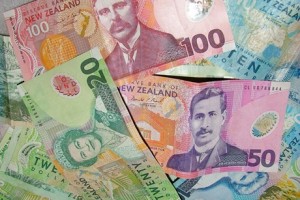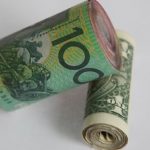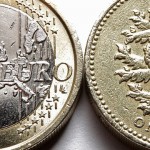 The kiwi, as the New Zealand dollar is best known, dropped from the strongest level since August 2011 against the US dollar, as a sharp drop in the weighted average price of dairy products fueled speculation the Reserve Bank of New Zealand may not raise borrowing costs as sharply as expected this year. The South Pacific nation is renowned as the home of the worlds top dairy exporter, Fonterra.
The kiwi, as the New Zealand dollar is best known, dropped from the strongest level since August 2011 against the US dollar, as a sharp drop in the weighted average price of dairy products fueled speculation the Reserve Bank of New Zealand may not raise borrowing costs as sharply as expected this year. The South Pacific nation is renowned as the home of the worlds top dairy exporter, Fonterra.
NZD/USD touched a session low at 0.8587 at 01:30 GMT, after which consolidation followed at 0.8600, losing 0.45% for the day. Support was likely to be received at March 26th low, 0.8571, while resistance was to be met at April 1st high, 0.8702, also the pairs highest since August 2011.
The weighted average price of nine products traded at the GlobalDairyTrade, a worldwide benchmark, slid 8.9 percent from two weeks ago to $4 124 a ton yesterday, the fourth straight drop and the weakest since August 2012.
New Zealand is an export-oriented country and any slowdown in the dairy sector may prompt the RBNZ to raise interest rates at a slower-than-expected pace.
“That dairy auction set it on its way,” IG’s Weston said of the New Zealand dollar, cited by Bloomberg. “This currency is one that’s done very well. There’s a lot of positioning in this, there’s a lot of good will and if you see any bit of bad news, it encourages people to take things off the table.”
Last week, New Zealand posted higher-than-expected trade surplus and Reserve Bank of New Zealand (RBNZ) Deputy Governor Grant Spencer said the rebuilding of Christchurch would add to inflation risks.
A report showed the nation had a trade surplus of 818 million NZ dollars (around $706 million), more than the 600 million forecast by analysts and the largest trade surplus since April 2011.
The RBNZ was the first central bank from the developed economies, to raise its cash rate. The central bank raised its benchmark interest rate by 25 basis points to 2.75% on March 13th.
In a speech at Hong Kong, Deputy Governor Spencer indicated that the RBNZ’s loan may have reduced pressure on the nation’s currency.
The kiwi dollar has climbed 5.4 percent this year, the most among 16 major currencies tracked by Bloomberg Correlation-Weighted Indexes.
Elsewhere, the Aussie dollar extended a drop from a four-month high against its US counterpart, after data showed the number of building approvals in Australia declined in February, raising concerns over the health of the nation’s housing sector, which the RBA sees as crucial to re-balance the economy as a mining investment boom wanes.
AUD/USD touched a session low at 0.9223 at 01:00 GMT, after which the pair consolidated at 0.9240, losing 0.1% for the day. Support was likely to be received at March 31st low, 0.9218, while resistance was to be encountered at April 1st high, 0.9302, also the pair’s highest since November 21.





